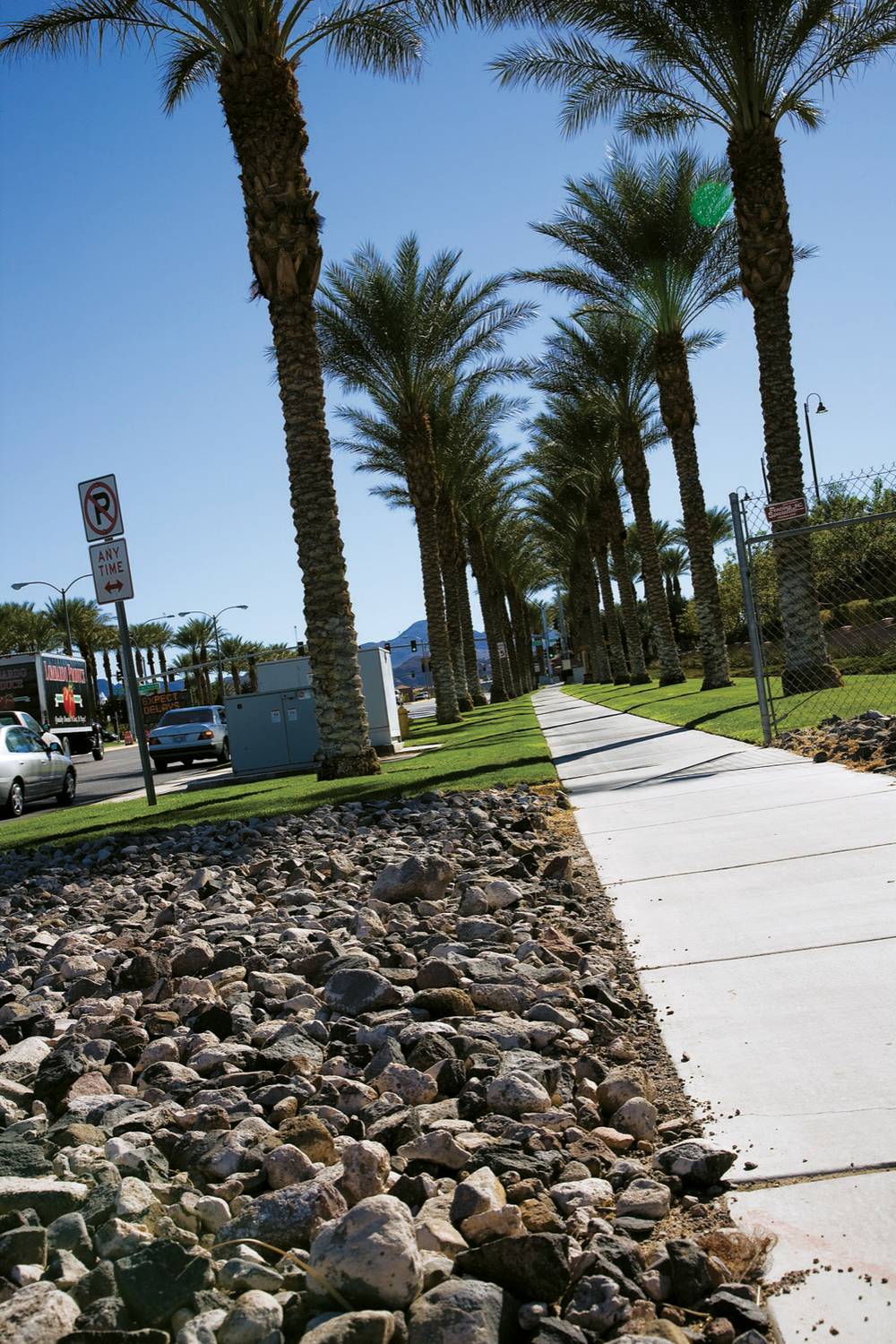Green is such a loaded word now. When you live in the desert, it’s even more so—do you mean green good, like ecologically sound and sustainable? Or green bad, like rolling hills of lush turf watered by sprinklers that suck from Lake Mead? Such is the dilemma in the Green Valley Ranch neighborhood, the moistly landscaped suburban wonderland in Henderson.
GVR was developed in the late 1990s as a 1,310-acre, 4,000-home master-planned community with four grassy parks, schools and retail space. Walkways buttressed by grass and trees all along Paseo Verde Parkway string from one end of the community to the other—it’s a lovely neighborhood. I know; I live there. I say that not only as full disclosure but also as a confession. It’s a bit like driving a Hummer in this era.
But recently, landscape crews have been tearing out some of the green in Green Valley. Those strips of grass along the walkway are coming out, and rocks are going in, and some of the sprinklers are no longer sprinkling. Green Valley is going toward the other green.
More
- From the Archives
- High and dry (10/2/08)
- Water wise (7/16/08)
- In water, who matters? (7/17/08)
- Visions of a wetter tomorrow (11/27/03)
- Beyond the Weekly
- SNWA
- Green Valley Ranch Community
“When Green Valley Ranch was built, there were many areas where grass was ... installed, but were too narrow to properly water. Water would be wasted ... in an attempt to keep the grass green, because it would run off into the street,” says Green Valley Ranch Community Association President Mike Forman. “If run-off were prevented by watering less, the grass would quickly turn brown.”
Forman says that officials from the Southern Nevada Water Authority were “hinting that fines for wasted water will rise and that rebates [for replacing grass with desert landscape] may go away soon.” SNWA offers $1.50 per square foot for commercial rebates, which, Forman says, made the association “able to make the decision rather quickly ...
“The ‘carrot’ [rebates] is being replaced by the ‘stick’ [fines]. For us, this made the decision easy; we save money for the homeowners and do our part for the community,” he says.
Kristen Howey, spokeswoman for SNWA, says that the rebate offers are not going away any time soon. But, she says, the Authority meets regularly with homeowners associations throughout the Valley encouraging just such de-greening. “A lot of those areas were developed when there was a whole different mentality. Slowly but surely, they’re doing conversions for a variety of reasons. They’ve been extremely responsive.”
Since 1999, owners of the Valley’s commercial properties (HOAs, apartments/condos, golf courses, schools, churches, etc.) have removed 78 million square feet of grass and replaced them with water-efficient trees, plants and shrubs, Howey says.
In 2008, 558 commercial properties have replaced 15.8 million square feet of grass with water-smart landscaping.
Green Valley Ranch is converting 104,331 square feet of common-area grass to desert landscaping.
But, says Forman: “We do not intend to convert 100 percent of turf areas. Where ... aesthetics and usage are consistent with grass, it will remain in place. Our main concern is with the obvious water-wasting sites. Along Paseo Verde Parkway, you will notice that we converted the area adjoining the street, while turf remains in many locations on the other side of the sidewalk.
“We are not, after all, ‘Brown’ Valley Ranch.”








Previous Discussion: